I recently made an 11×14 print of a rural Alberta landscape, so… you know, lots of sky and prairie goodness, and there’s nothing more frustrating than thinking your print is done, only to see a clearly defined outline of a hair in a wheat field. This isn’t something a rocket blower is going to remove either. Enlarging at this size, the hair is barely visible, even when tilting the negative under a strong light. This is where an unsung hero needs to blast that fleck of follicle into next week… that hero is compressed air.
While you may find it amusing that I have dedicated an entire article to a metal can with some gas squeezed into it, back in the 20th century when film photography was just called….photography, it was a crucial piece of equipment for anyone’s bag and darkroom. It also recently saved my workflow when I had to hadouken a tiny unidentified speck from my Nikon F100 that had left its mark in the form of a steady line across half a roll of film. While we all like to think, as analog shooters, a nice clear shot is the responsibility of the lens, and for the most part it is, compressed air was, and is, responsible for more crisp clear images than any single lens. Specifically I’m talking about Falcon Dust-Off which was, at the turn of the last century the Captain America of air in a can, and dust was the Hitler he punched out.
Dust finds itself EVERYWHERE for an analog shooter, especially in the darkroom. In order of appearance.
- The back and front of your camera and viewfinder.
- The back and front elements of your lens.
- Both sides of your lens filter.
- On your finished film.
- On your scanning holder and scanner bed.
- In your enlarger
- On your finished print.
Falcon had staked its claim as THE dust and lint killer for photographers, as seen in this ad, published in Petersen’s Photographic in August 1976.
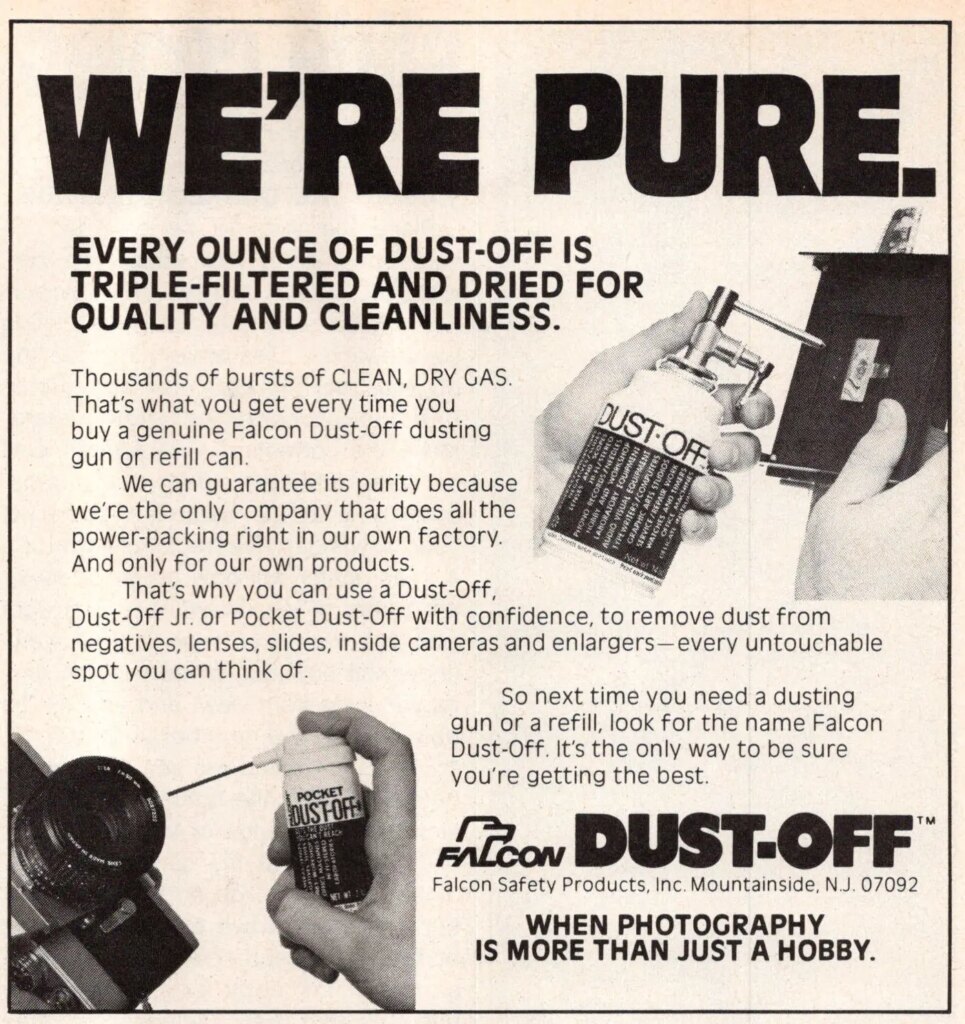
Using phrases like “pure” and “triple filtered” you’d think it was an ad for beer. Every angle of that promotion tells us that this ain’t some peasant’s “dusting gun” and you would be a fool to pick up a cylinder of brand x. I love that by the way, calling it a dusting gun, and the metaphors of battling unwanted flecks of dead skin cells and the like don’t end there either, as seen in this 1985 ad in Darkroom Photography Magazine warning you not to be a “blowhard” and to “join the clean corps.”
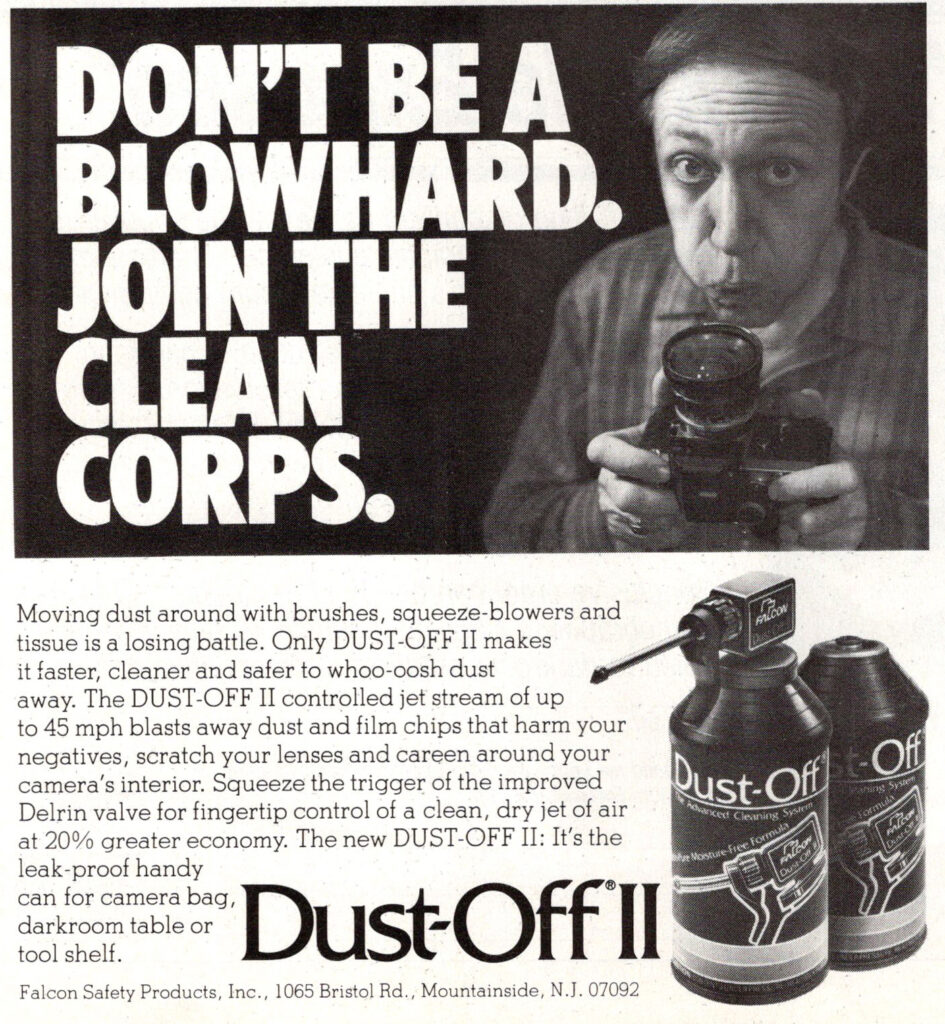
Are you using a brush you amateur? Does your rocket shaped squeeze-blower deliver a 45 mph stream via a Delrin value? I didn’t think so.
While these days the Dust-Off has relegated itself to removing cat hair (among other things) from electronics, a mandatory practice I might add, us old-school shutter bugs need it that much more.
I found it humorous, as I have done research on a number of things to come across these ads that you just don’t see anymore.
As always, I hope my little dip into photography history put a smirk on your face. If you’re not familiar with my work, check out my YouTube Channel.
Stay Classic,

Share this post:
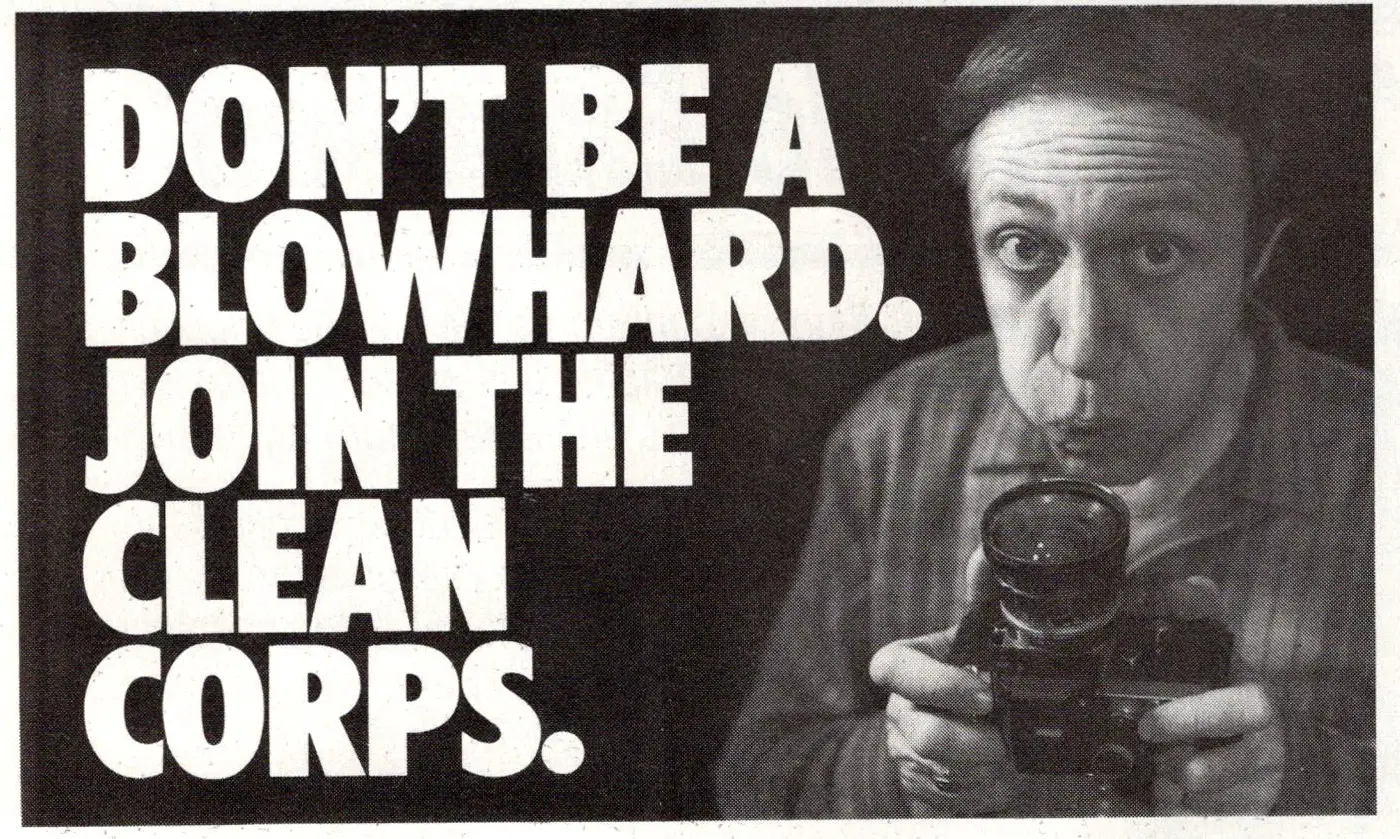
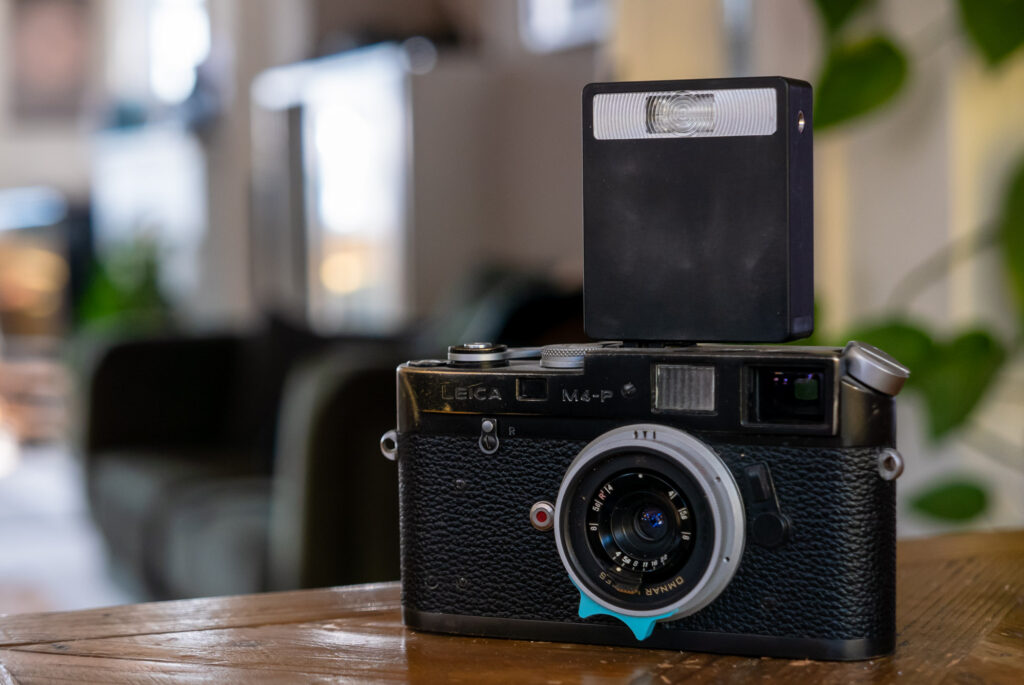
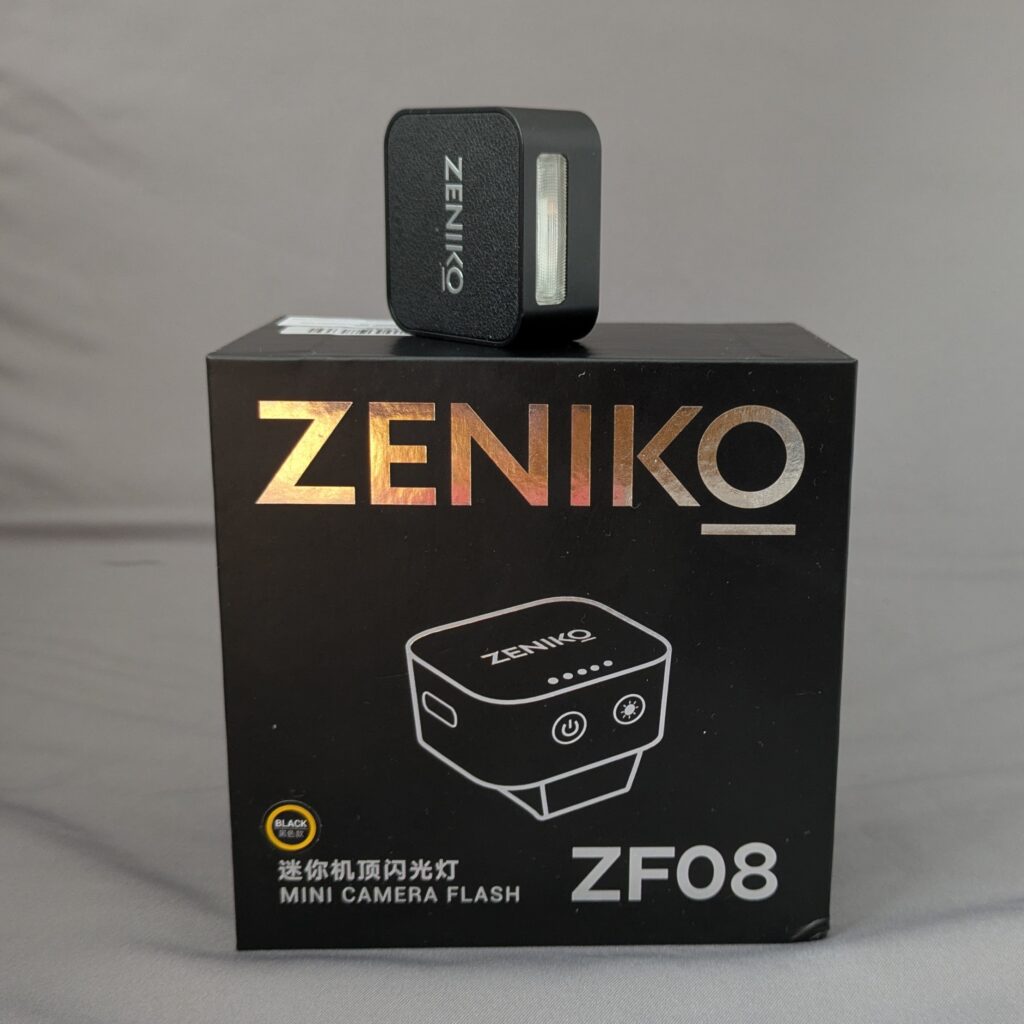
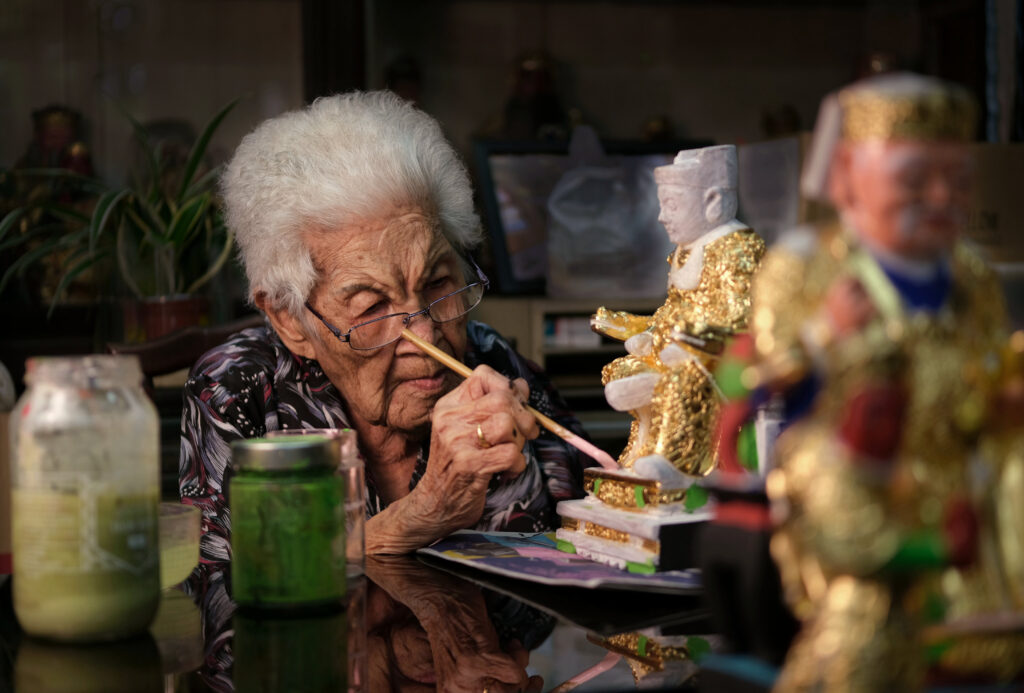
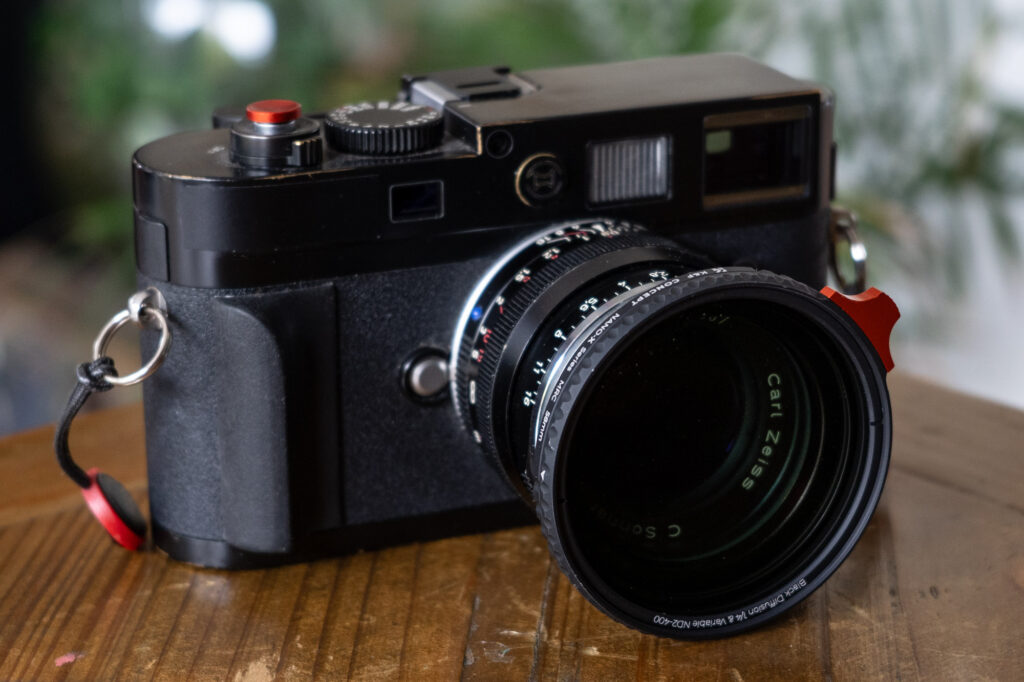




Comments
DANIEL J CASTELLI on Falcon Dust-Off: An Unsung Hero of Film Photography
Comment posted: 07/10/2023
But Dust-Off the canned air! Quite a few shutters were blown off their rails when clueless photographers cleaned the innards of their cameras. The original formula was potentially dangerous or fatal if inhaled, so a strong pepper scent was added to discourage misuse.
I just came out of my darkroom before reading this article. I printed for about 2 hours, and I used Dust-Off for each and every negative I printed today. OK, just two negs, but the air did it's job! Not as effective as the original canned bomb, but the pesky dust was vanquished.
Comment posted: 07/10/2023